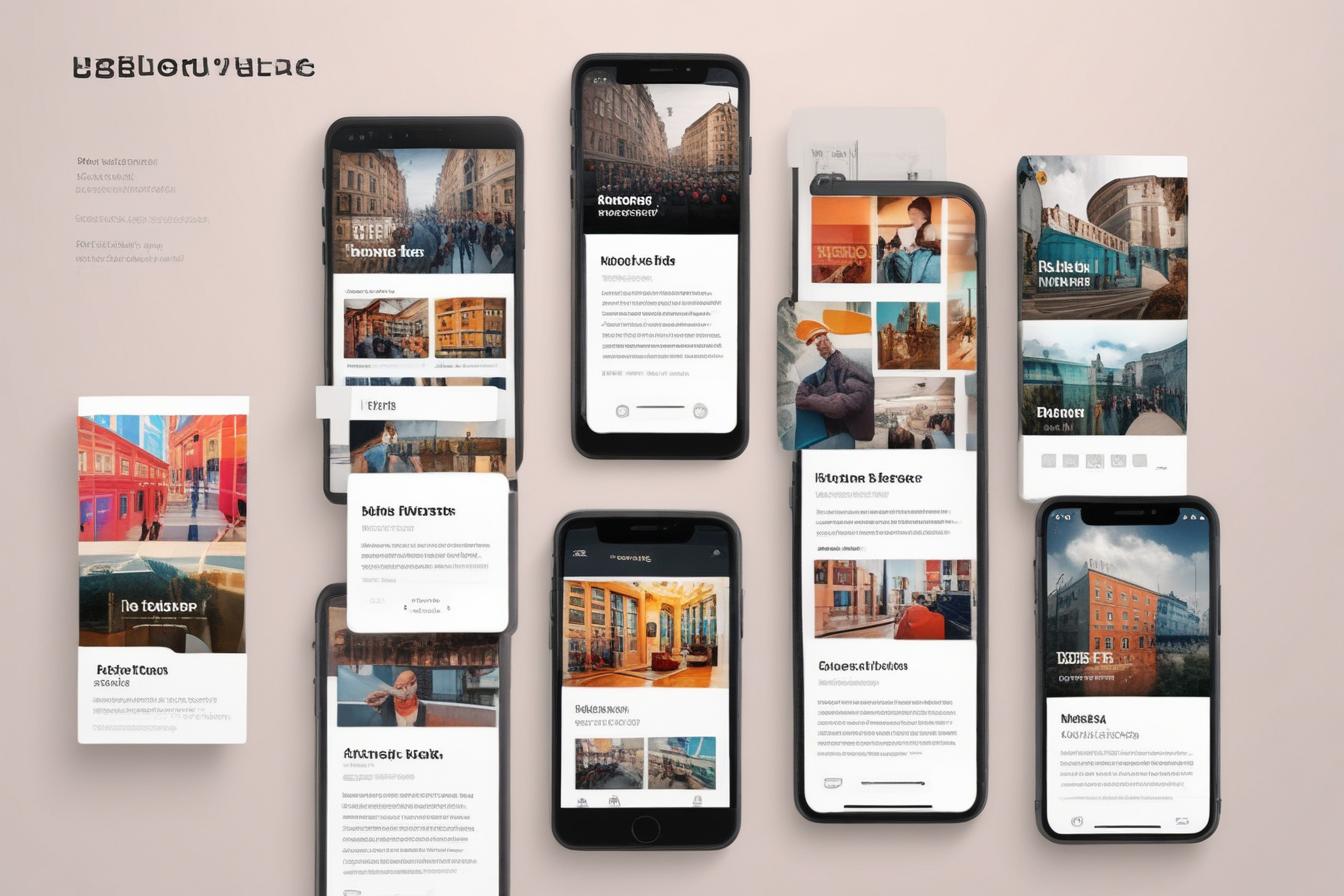What is Mobile-First Content?
In today’s digital landscape, where mobile devices have become an integral part of our lives, creating a mobile-first content strategy is no longer an option but a necessity. Mobile-first content refers to the approach of designing and optimizing web content with the mobile user experience as the primary focus. This means prioritizing the needs and preferences of mobile users from the beginning, rather than treating mobile as an afterthought.
The Mobile User Experience
When it comes to creating mobile-first content, understanding the mobile user experience is paramount. Mobile users interact with content differently than desktop users, often in a more distracted and fragmented manner. They expect quick load times, easy navigation, and content that is optimized for smaller screens. Failing to meet these expectations can lead to high bounce rates and poor engagement.
Responsive Design
At the core of a mobile-first content strategy lies responsive design. Responsive design ensures that your website and content adapt seamlessly to different screen sizes and device types, providing a consistent and user-friendly experience across all platforms. This approach eliminates the need for separate mobile and desktop versions, simplifying content management and enhancing overall user satisfaction.
Why Mobile-First Content Matters for SEO
Adopting a mobile-first content strategy is not only essential for user experience but also holds significant implications for your search engine optimization (SEO) efforts. Google and other major search engines have embraced a mobile-first indexing approach, meaning they prioritize the mobile versions of websites when crawling and ranking content.
Mobile-First Indexing
With mobile-first indexing, search engines evaluate the mobile version of your website and content as the primary source for ranking signals. This means that even if your desktop site is well-optimized, a poorly constructed mobile experience can negatively impact your search rankings. By focusing on mobile-first content, you ensure that your website and its content are optimized for the user experience that search engines prioritize.
Mobile-Friendly Signals
Beyond indexing, search engines also consider various mobile-friendly signals when determining rankings. These signals include page load speed, usability, and overall mobile experience. A seamless and engaging mobile experience can boost your search visibility, while a subpar mobile offering may cause your rankings to suffer.
Mobile UX Best Practices for Better Engagement
Creating a compelling mobile user experience is crucial for driving engagement and conversions. By leveraging mobile-first content strategies and adhering to best practices, you can deliver a seamless and satisfying experience for your mobile audience.
Responsive and Adaptive Design
As mentioned earlier, responsive design ensures that your content adapts seamlessly to different screen sizes and device types. However, adaptive design takes this concept further by optimizing content layout, functionality, and navigation specifically for various device types. By combining these approaches, you can provide a tailored user experience that enhances engagement and usability.
Succinct and Scannable Content
Mobile users often consume content in shorter bursts and in more distracting environments. To cater to this behavior, your mobile-first content should be concise, scannable, and easy to digest. Break up text with subheadings, bullet points, and visual elements to improve readability and retain user attention.
Optimized Images and Videos
Rich media elements like images and videos can significantly enhance the mobile experience when used correctly. However, large file sizes can lead to slow load times and frustration for mobile users. Optimize your visual assets by compressing them and employing responsive techniques to ensure they load quickly and display properly on various devices.

Optimizing Content for Featured Snippets
In addition to traditional search results, optimizing your mobile-first content for featured snippets can significantly boost visibility and drive more traffic to your site. Featured snippets, also known as position zero results, are the concise answers or summaries displayed at the top of search engine result pages (SERPs) for certain queries.
Structured Data and Markup
To increase your chances of appearing in featured snippets, leverage structured data and markup formats like Schema.org. These formats help search engines better understand the context and meaning of your content, making it easier for them to identify and display relevant snippets.
Question-Based Content
Many featured snippets are triggered by question-based queries. By creating content that directly addresses common questions in your industry or niche, you can position yourself as a valuable information source and increase your chances of capturing featured snippet real estate.
Concise and Direct Answers
Featured snippets are designed to provide quick and concise answers to user queries. Structure your content with clear, direct answers to common questions, and use formatting techniques like headings and paragraphs to make it easy for search engines to identify and extract relevant information.
A/B Testing Mobile Content: A Data-Driven Approach
While following best practices is essential, continuously optimizing your mobile-first content strategy through data-driven experimentation can yield even better results. A/B testing allows you to compare different content variations and identify which elements resonate most with your mobile audience.
Testing Content Elements
A/B testing can be applied to various content elements, such as headlines, calls-to-action (CTAs), text length, visual elements, and more. By testing different variations, you can gain insights into what captures your audience’s attention and drives desired actions.
Measuring Key Metrics
When conducting A/B tests, it’s crucial to establish key performance indicators (KPIs) that align with your goals. These metrics could include bounce rate, time on site, conversion rate, or any other relevant measure of engagement or success. By analyzing these metrics across different content variations, you can make data-driven decisions to optimize your mobile-first content strategy.
Continuous Optimization
A/B testing should be an ongoing process, as user preferences and behaviors can shift over time. Continuously testing and refining your content based on data-driven insights will help you stay ahead of the curve and deliver a consistently engaging mobile experience.

Mobile-First Content Examples That Convert
To illustrate the power of a well-executed mobile-first content strategy, let’s explore some examples of brands that have successfully leveraged this approach to drive conversions and engagement.
ContentScale.fr
ContentScale.fr is an online tool that utilizes AI to generate SEO-optimized articles at scale, making it a cost-effective and time-saving solution for businesses seeking high-quality content. Their mobile-first approach ensures that their platform and generated content are optimized for seamless viewing and interaction on mobile devices, allowing users to access and create content on-the-go.
By prioritizing mobile usability, ContentScale.fr empowers businesses to stay competitive and reach their target audience across all devices, without sacrificing content quality or the user experience. This innovative approach to content creation and delivery exemplifies the power of mobile-first strategies in driving conversions and engagement.
Retail and E-Commerce Brands
Many leading retail and e-commerce brands have embraced mobile-first content strategies to enhance the shopping experience for their customers. For example, retailers like Amazon and Walmart have developed mobile-optimized websites and apps that offer features like:
- Easy product browsing and filtering
- Streamlined checkout processes
- Location-based services and recommendations
- Personalized content and offers
By prioritizing the mobile experience, these brands not only improve user engagement but also drive higher conversion rates and customer loyalty.
News and Media Publishers
In the fast-paced world of news and media, a mobile-first content strategy is crucial for capturing and retaining audience attention. Publishers like The New York Times and The Guardian have invested heavily in mobile-friendly content formats, such as:
- Responsive article layouts
- Interactive multimedia elements
- Push notifications for breaking news
- Seamless integration with social media platforms
By delivering highly engaging and shareable content optimized for mobile devices, these publishers have successfully monetized their mobile audiences and solidified their position in the digital news landscape.

Conclusion
In today’s mobile-centric world, adopting a comprehensive mobile-first content strategy is essential for driving search visibility, engagement, and conversions. By prioritizing the mobile user experience from the outset, optimizing for featured snippets, and leveraging data-driven experimentation, you can create highly effective and engaging content that resonates with your audience across all devices.
As exemplified by brands like ContentScale.fr, retailers, and news publishers, embracing a mobile-first approach not only enhances the user experience but also translates into tangible business benefits, such as increased conversions, customer loyalty, and long-term competitiveness.
To stay ahead of the curve and future-proof your content strategy, it’s imperative to prioritize mobile optimization and continuously refine your approach based on evolving user behaviors and technological advancements.
Ready to take your content strategy to the next level and dominate the mobile landscape? Visit ContentScale.fr today and experience the power of AI-driven, mobile-first content creation at an unbeatable value.
